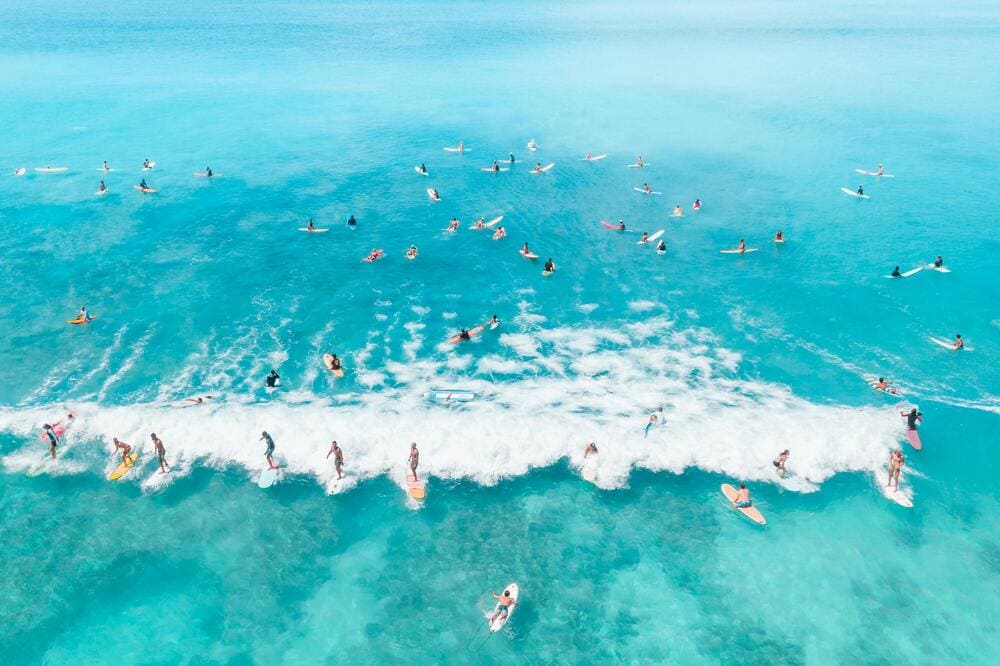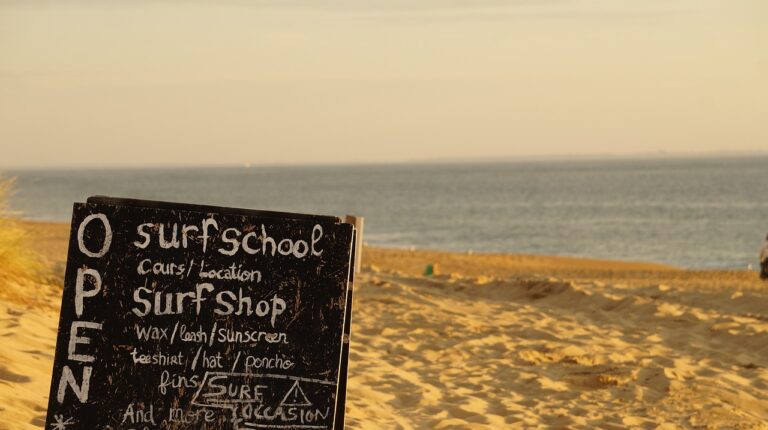Running a surf school involves more than offering great lessons—it’s about creating an experience that resonates with both locals and international travelers. A well-crafted website is essential for attracting international customers, showcasing your unique offerings, and making the booking process seamless. Here’s how to design a surf school website that appeals to a global audience and drives bookings.
- Multilingual Navigation: Speak Their Language
- Visual Content: Captivate with Photos and Videos
- Simplify the Booking Process
- Focus on Local SEO to Attract Travelers
- 5Build Trust with Testimonials and Reviews
- Mobile Optimization: A Must for On-the-Go Travelers
- Provide Detailed Course Information
- Write a Blog to Attract and Inform Travelers
- Secure Your Website
- Conclusion
Multilingual Navigation: Speak Their Language
Language can often be a barrier for international customers. To ensure your surf school feels welcoming to everyone, offer multilingual navigation. By providing translations in popular languages such as English, Spanish, German, and French, you make it easier for global visitors to explore your website. Use professional translators to maintain accuracy and cultural sensitivity, and place a language selector prominently at the top of your site. This simple feature shows international customers that you value inclusivity.
Visual Content: Captivate with Photos and Videos
Surfing is more than a sport—it’s a lifestyle, and your website should reflect that energy. High-quality visuals, such as photos and videos, play a crucial role in capturing the interest of international customers.
Showcase your location’s natural beauty, from pristine beaches to stunning sunsets. Include action shots of students learning to surf, smiling instructors, and fun group activities. Videos can go a step further by offering a dynamic view of your lessons, facilities, and the overall vibe of your surf school. Engaging visuals create an emotional connection with potential customers and make your website more memorable.
Simplify the Booking Process
A smooth and intuitive booking system is essential for converting website visitors into paying customers. International clients, in particular, value clarity and convenience when making reservations online. Ensure your booking process is straightforward, with clearly labeled steps and a prominent “Book Now” button on your homepage and other key pages.
Offer multiple payment options to cater to a global audience, including credit cards, PayPal, and other popular methods. Display prices in different currencies or use a currency converter tool to simplify the decision-making process for international customers. After booking, send automatic confirmation emails with all the necessary details, such as lesson times, what to bring, and directions to your surf school.
Focus on Local SEO to Attract Travelers
Search engine optimization (SEO) is key to making your surf school visible to international tourists planning their trips. Local SEO ensures that your website appears in search results for terms like “surf lessons in Bali” or “surf schools near me.”
Incorporate location-specific keywords throughout your website content, including headings, service descriptions, and meta tags. For example, phrases like “family-friendly surf school in Canggu” or “beginner surf lessons in Byron Bay” will help attract visitors searching for these specific services.
Additionally, optimize for voice search. Many travelers use voice assistants like Siri or Alexa to find information, so focus on conversational keywords such as “Where can I find beginner surf lessons?” or “Best surf schools for kids near me.” A dedicated FAQ section can help address these queries while improving your website’s SEO.
5Build Trust with Testimonials and Reviews
For international customers who may be unfamiliar with your business, testimonials and reviews are invaluable. Highlight positive feedback from previous students, particularly those from diverse backgrounds. This demonstrates your school’s ability to cater to a global audience.
You can dedicate a section of your website to testimonials, featuring quotes, star ratings, and even photos of satisfied customers. If you have reviews on platforms like TripAdvisor or Google, link to them for added credibility. Potential customers are more likely to trust your surf school when they see evidence of others’ positive experiences.
Mobile Optimization: A Must for On-the-Go Travelers
With many travelers using their smartphones to plan activities, your website must be mobile-friendly. A mobile-optimized site ensures that buttons, menus, and forms are easy to navigate on smaller screens.
Responsive design is essential, allowing your website to adapt seamlessly to different devices and screen sizes. Additionally, prioritize fast loading times, as slow websites can frustrate visitors and lead to high bounce rates. A mobile-friendly design not only enhances user experience but also improves your rankings on search engines, making it easier for potential customers to find you.
Provide Detailed Course Information
International customers often require more information to make booking decisions, especially if they are new to surfing. Include detailed descriptions of your lessons and packages, highlighting the skill levels they are suitable for (beginner, intermediate, advanced). Mention what’s included in the price, such as surfboard rentals or wetsuits, and provide clear instructions on what students need to bring.
Adding an FAQ section can also help answer common questions about safety, language availability during lessons, or group sizes. Transparency in your offerings builds trust and ensures potential customers feel confident in choosing your surf school.
Write a Blog to Attract and Inform Travelers
A blog can do wonders for your website’s traffic while positioning your surf school as an expert in the industry. Write about topics that interest travelers and potential surfers, such as “Top Surf Spots in [Your Location]” or “Tips for First-Time Surfers.”
Incorporate relevant keywords like “surf lessons for beginners” or “best surf beaches near me” to optimize your content for search engines. Blogs not only improve your SEO but also provide value to your audience, keeping them engaged and increasing the likelihood of bookings.
Secure Your Website
Online security is a top concern for international customers, especially when entering payment information. Ensure your website is secured with HTTPS encryption to protect sensitive data. Display security badges or trust seals prominently on your booking pages to reassure visitors. Regularly update your website’s software and plugins to minimize vulnerabilities.
Conclusion
Creating a surf school website that attracts international customers involves more than just good design. By focusing on multilingual navigation, stunning visuals, seamless booking systems, and strong SEO practices, you can cater to a global audience and boost your bookings. Each feature contributes to an exceptional user experience that builds trust and inspires action. Start building your ultimate surf school website today and connect with surfers from around the world.







